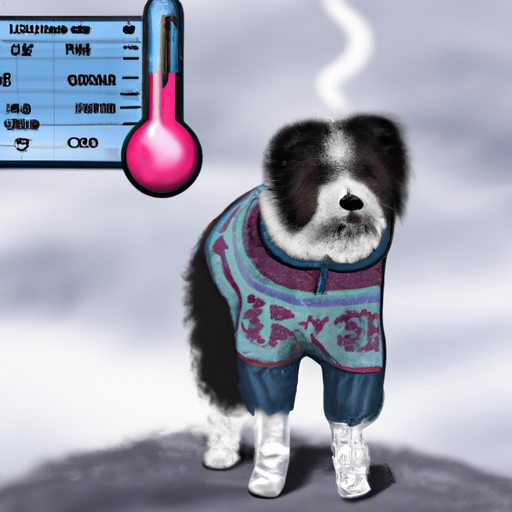As a caregiver, knowing how to protect your furry friend from extreme weather conditions is crucial. In this guide, you’ll learn about the temperature limits for dogs and how to keep them safe and warm during cold spells.
Understanding Your Dog’s Tolerance to Cold
Each dog has its unique tolerance to cold, affected by factors such as:
-
Breed: Some dogs, like Siberian Huskies and Bernese Mountain Dogs, are bred for cold climates and have a higher tolerance. On the other hand, breeds like Chihuahuas or Greyhounds have less natural insulation and are more susceptible to cold.
-
Size: Generally, larger dogs with more body mass retain heat better than smaller ones.
-
Age and Health: Puppies, old dogs, and dogs with health problems are more vulnerable to cold.
-
Coat Type: Dogs with thick, double-layered coats are better equipped for cold weather than dogs with thin coats.
The Danger Zone: How Cold is Too Cold?
What temperature is too cold for dogs, you ask? Here’s a general guideline:
| Temperature | Risk Level |
|---|---|
| Above 45°F | Safe for all dogs |
| 20°F – 45°F | Some dogs may feel discomfort |
| Below 20°F | Potentially unsafe for most dogs |
| Below 0°F | Dangerous for all dogs |
Remember, these are just guidelines. Always monitor your dog’s behavior in cold weather for signs of discomfort or distress.
Tips for Keeping Your Dog Warm
Here are some steps you can take to keep your dog warm:
-
Provide Proper Shelter: If your dog spends a lot of time outdoors, make sure they have a warm, insulated shelter to retreat to.
-
Dress Them Appropriately: Doggy sweaters and boots can help keep your pet warm, especially if they have a thin coat or are a small breed.
-
Limit Outdoor Time: Limit your dog’s time outside in freezing temperatures and never leave them outside overnight.
-
Keep Them Dry: Wet dogs can get cold quickly, even at higher temperatures, so dry your dog off after they’ve been outside in the snow or rain.
Recognizing Hypothermia in Dogs
Hypothermia, when a dog’s body temperature falls below normal, is a serious risk in cold weather. Signs of hypothermia include:
- Shivering
- Lethargy
- Stiffness
- Weak pulse
- Dilated pupils
If you suspect your dog has hypothermia, wrap them in warm blankets and contact your vet immediately.
Frequently Asked Questions
Q: Can dogs stay outside in the cold?
A: This depends on the breed, size, and health of the dog. Some breeds can handle colder temperatures better than others. However, no dog should be left outside in temperatures below freezing without proper shelter.
Q: What should I do if my dog refuses to go outside in the cold?
A: You can encourage your dog to go outside by making it a positive experience, like playing a game or giving them a treat. If they still refuse, consider using puppy pads or a litter box indoors.
Q: How can I tell if my dog is cold?
A: If your dog is shivering, acting anxious, or trying to burrow for warmth, they could be cold. Always monitor your dog’s behavior in cold weather.
Remember, it’s your responsibility as a caregiver to ensure your dog’s comfort and safety in cold weather. Stay informed, stay observant, and you’ll keep your best friend safe and warm all winter long.



